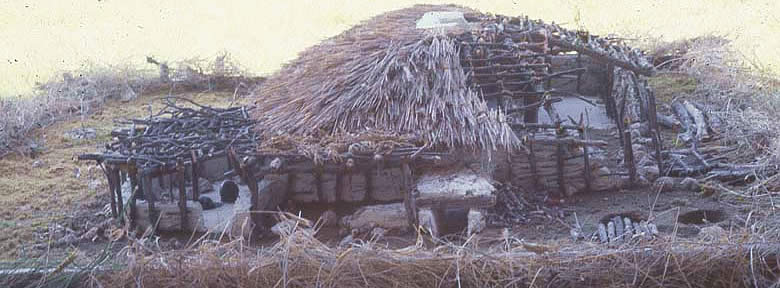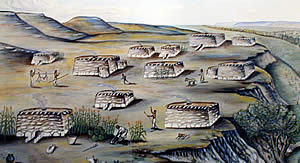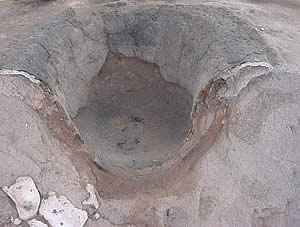Slabhouses: Early Stone Farmhouses


Between 500 to 900 years ago, people in what we call today the Texas Panhandle lived in villages along the Canadian River and other stream valleys. These first settlers of the Panhandle grew their own crops, hunted buffalo and other game, and collected many wild plants. For shelter, they built sturdy houses made of stone and an early type of cement within a shallow pit. These houses were cool in summer's heat and withstood the blasts of cold air that often sweep across the Plains in winter. Archeologists have found the remains, or ruins, of many of these houses, which they have named slabhouses because of the slabs of stone that formed the lower walls.

To construct their houses, the villagers would dig a pit about 2 or 3 feet below the surface of the earth. Then they would line the dirt walls in the pit with stone slabs. Above ground level, they would add walls of stone and mud mortar (cement). The roofs of these houses were made of grass and wood. Some archeologists believe the roofs were slanted in a pyramid shape, while others believe the houses resembled adobe pueblos with their flat roofs. Like pueblos, some slabhouses were built in blocks of rooms to accommodate several familes. Sometimes an individual family would construct their slabhouse far from other people, perhaps to be closer to fields to grow crops.
The people who lived in these slabhouses hunted small game such as rabbits and birds but also larger animals like deer and buffalo. They ate wild berries and nuts in addition to the corn and squash they grew themselves. For their stone tools and weapons, they quarried a colorful stone that we call Alibates flint. It is found only in the Texas Panhandle and parts of Oklahoma.
